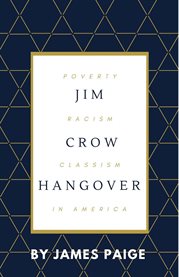Details
PUBLISHED
Made available through hoopla
DESCRIPTION
1 online resource
ISBN/ISSN
LANGUAGE
NOTES
Jim Crow Hangover looks at America's unending quest to address the unresolved Civil War. The terms of agreement for surrender signed by Robert E. Lee in 1865 ended the armed conflict. After each side put down their arms, negotiations regarding states' rights, social integration, and economic support for the formerly enslaved began. The issue of the states' rights - rights and powers reserved by the state governments rather than the national government according to the U.S. Constitution - remains an issue. The battle over states' rights has shifted from north versus south to red versus blue. The social and economic disparities between Blacks and whites persist. There are three periods of race relations in the United States following emancipation. Reconstruction, Segregation, and Complicit Tolerance. Reconstruction, 1865 to 1877, was a period of hope. The formerly enslaved were less restricted socially and politically. Continued negotiations on the Confederacy's states' rights led to the withdrawal of Union troops - freedom protections for the formerly enslaved ended. Segregation became law in 1896, and hope for inclusion and integration faded. It took nearly 60 years for the United States to rule segregation and the associated Jim Crow laws illegal. The Brown v Board of Education of 1954 did not lead to a post-segregation era. The Jim Crow Hangover started an age of Complicit Tolerance of discriminatory practices against and over-policing African Americans. Congress passed the Equal Employment Opportunity (EEO) Act of 1972, and in 1974, the Fair Housing Act. Housing and employment equity remains elusive. After several voting rights acts, there is still voter suppression. Toleration of racial, social, and economic inequity continues. The wealthiest country in the world continues to produce an astonishing number of under-resourced and unhealthy citizens. What could ignite sufficient moral indignation to challenge America's social and economic structures?
Mode of access: World Wide Web







